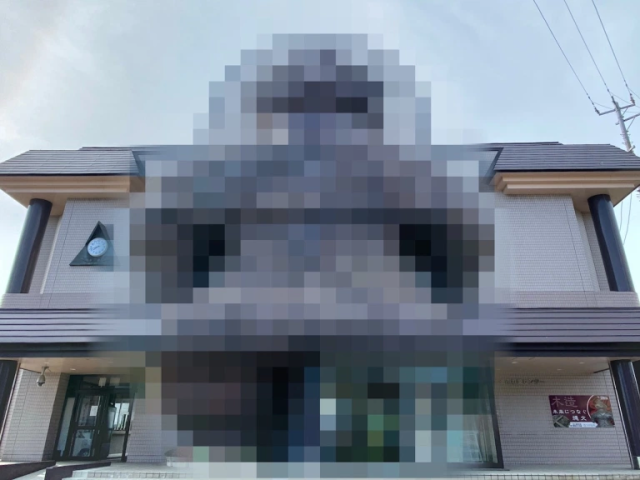
It looks like a science fiction monster of the week, but it’s actually a salute the millennia-old past.
As a country that primarily gets around by train, Japan has a lot of stations, and some of them have some pretty cool stuff inside. There’s one in Nagano that grows wine grapes on its platform, and another in Tokyo that installed special poop-blocking plates so a family of birds that made its nest inside the building wouldn’t have to be relocated.
But our Japanese-language reporter Saya Togashi recently heard about a station in that has something special on the outside, so she headed to the town of Tsugaru in Aomori Prefecture to see for herself.
The sun was already down by the time she got there, but the local rail stop, Kizukuri Station, is pretty easy to find in this rural community. It’s one of the few buildings in town that’s lit up at night, and like a beacon it drew Saya closer and closer…
…until it stopped her dead in her tracks.
Towering above her, and really most of the other structures in the area, was a giant…something. Saya’s first thought was that this was Dogouf, one of the colossal foes of tokusatsu hero Ultraman.
▼ Dogouf
【朝明】
— ウルトラ兄弟と優作に憧れる道産子 (@yusaku33) April 23, 2019
おはようございます。
遮光器土偶魔神ドグーフ ティガ pic.twitter.com/VpqL11gM1T
▼ Kizukuri Station
As Saya’s mind was trying to process what she was looking at, the giant’s eyes began to glow.
“I…I must be seeing things, right?” Saya asked herself. Chalking it up to fatigue-related hallucination, she decided to go get some sleep and come back and see what the station really looks like in the light of day.
Except…
…even in the morning sun, the giant remains.
However, Saya was reassured when she saw other people walking in and out of the station on their way to work or school, all without the giant lifting its foot and crushing the puny humans underneath. As a matter of fact, she now noticed that it only has one leg.
So what’s going on here? Kizukuri Station is located near the Kamegaoka Ruins, where archaeologists found remnants of a settlement from Japan’s Jomon period, which stretched back all the way to 14,000 BC. Among the relics researchers unearthed were clay figures called shakoki-dogu.
▼ Shakoki-dogu
“Shakoki” literally means “shader” or “light blocker,” and the figures name references the goggle-like detailing around the eyes. Many shakoki-dogu are discovered with a limb or body part snapped off, and some researchers believe this was done purposely, as part of some sort of ritual or ceremony. Since the shakoki-dogu found at the Kamegaoka Ruins that served as inspiration for the design of Kizukuri Station was missing its left legs, the architects retained this aspect for the building.
▼ Its right foot, meanwhile, is surrounded by flower planters.
Construction on Kizukuri Station finished in 1992, and the giant shakoki-dogu statue stands 17.3 meters (56.8 feet) tall, making it far bigger than the clay figures found at the nearby archeological dig, and almost as large as the life-size Gundam statue in Tokyo.
▼ Even the park located next to Kizukuri Station has a historical theme, with its public toilet facility designed to resemble a Jomon-era dugout pit dwelling.
The statue has become a symbol of the town, and now that Saya knew more about it, it didn’t seem so intimidating. Once she found out it’s been given a cute nickname, Shako-chan, the colossus even started to seem cute.
▼ Looking good, Shako-chan!
Even the reason Shako-chan’s eyes light up at night is actually kind of sweet, as the illumination starts about three minutes before a train is scheduled to pull into the station, giving anyone mulling about outside that if they need to get on, they should start heading for the platform.
Kizukuri Station is primarily used by locals, as the town doesn’t get huge numbers of sightseers or business travelers. Because of that, the nonchalant way everyone walks by the gigantic shakoki-dogu, which looks on with a calm, peaceful expression, makes it feel like Shako-chan is telling them all “Have a good day! See you later!” in the morning and “Welcome back!” in the evening.
So it turns out that Kizukuri Station’s unique architecture isn’t anything to be afraid of after all, and helps give a sense of identity and togetherness to a community that shakoki-dogu were first part of thousands of years ago.
Shakoki-dogu photo: Wikipedia/Rc 13
All other images ©SoraNews24
● Want to hear about SoraNews24’s latest articles as soon as they’re published? Follow us on Facebook and Twitter!
[ Read in Japanese ]

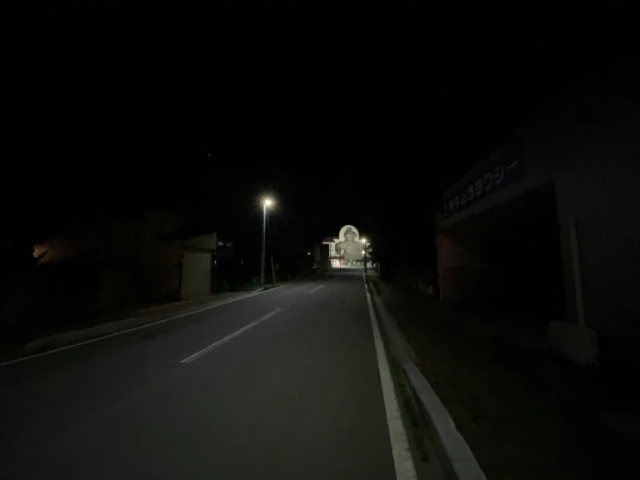
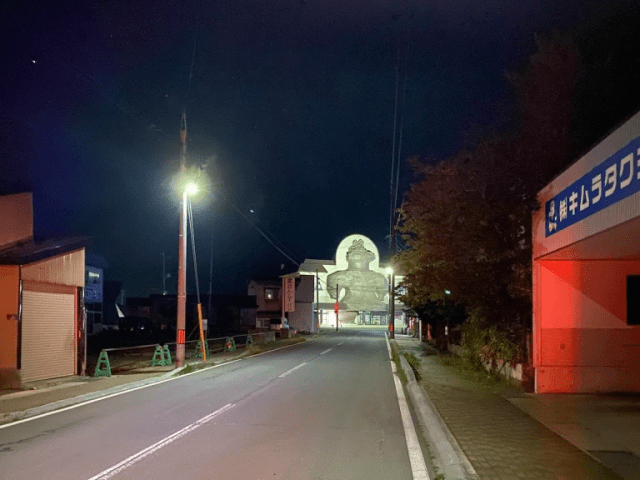
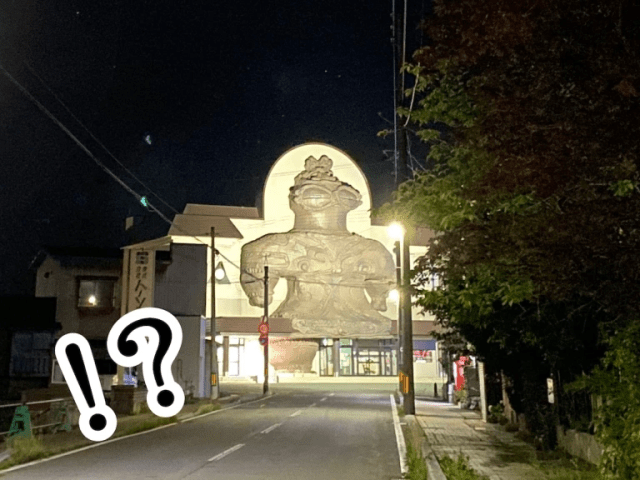
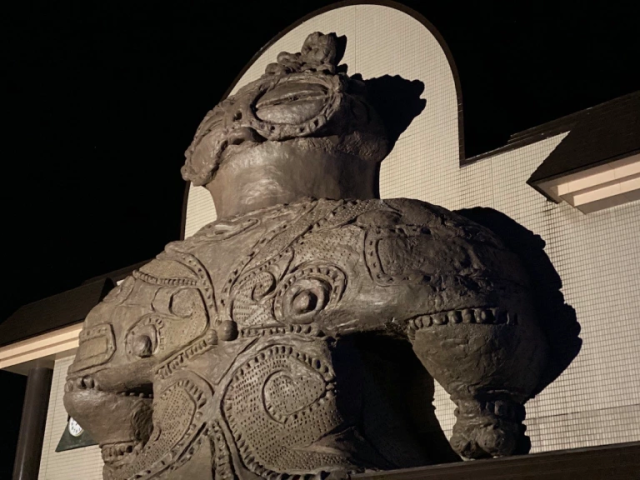
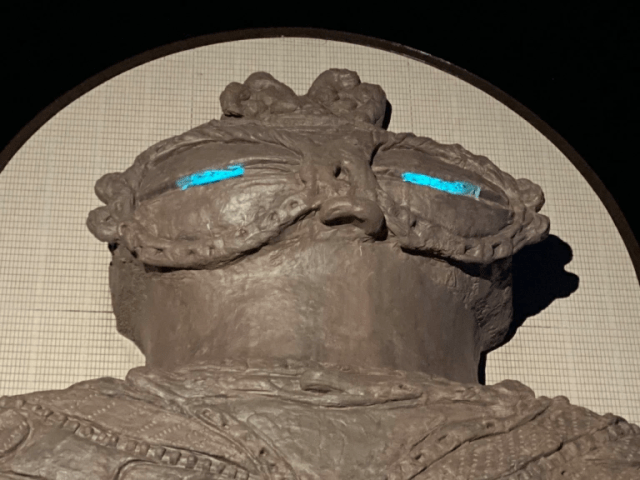
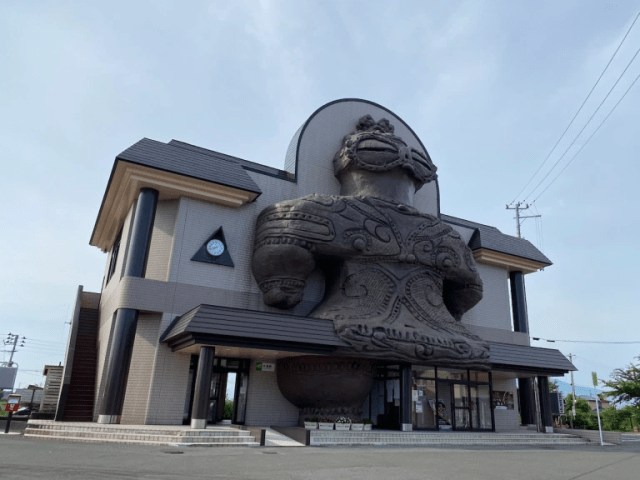
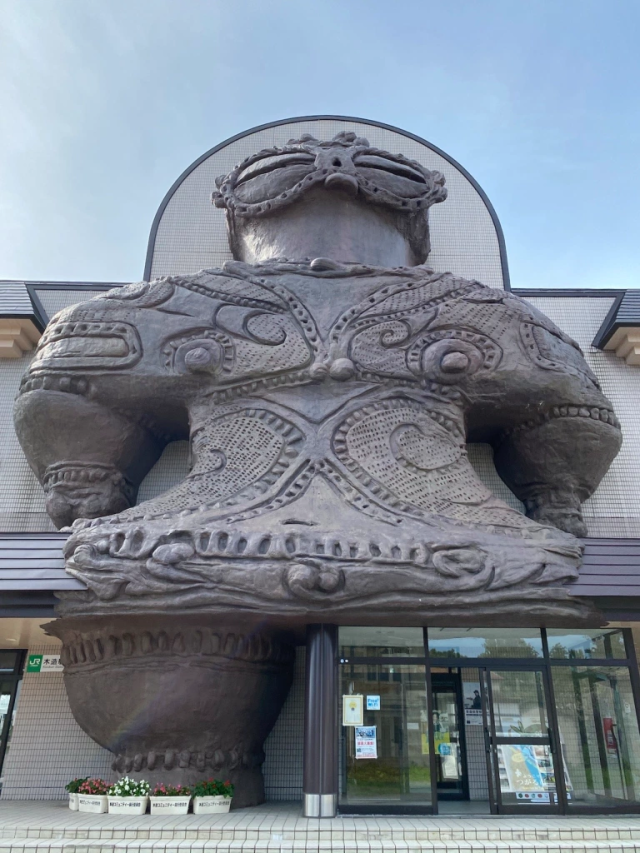
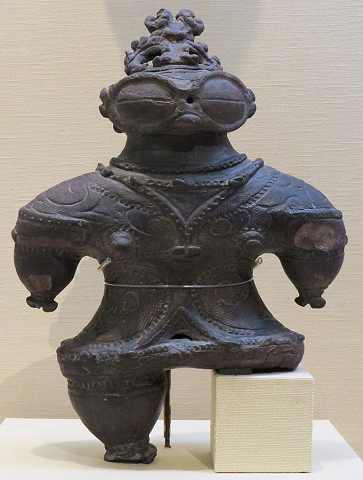
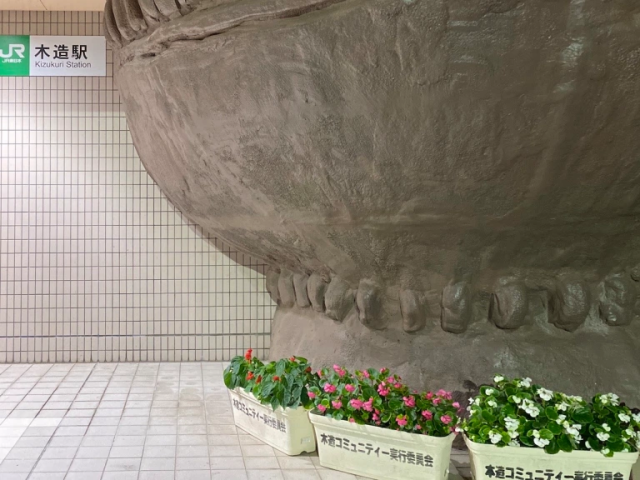
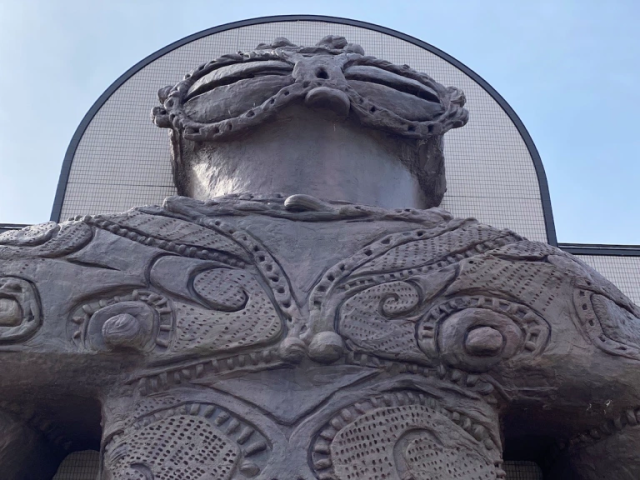
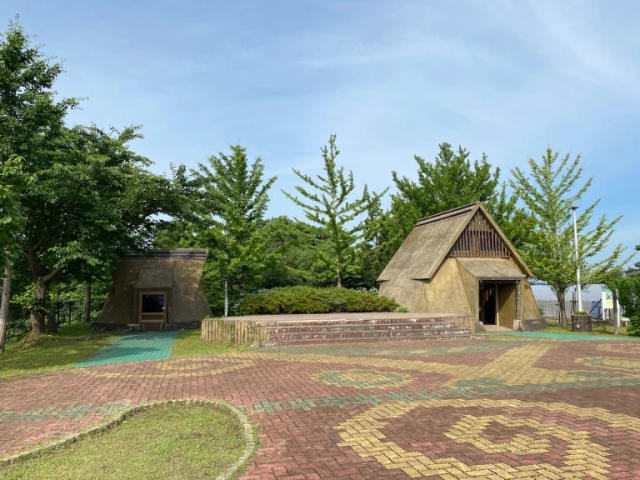
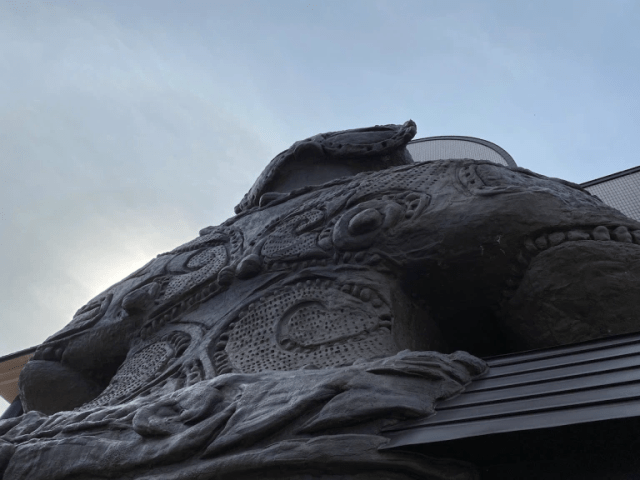
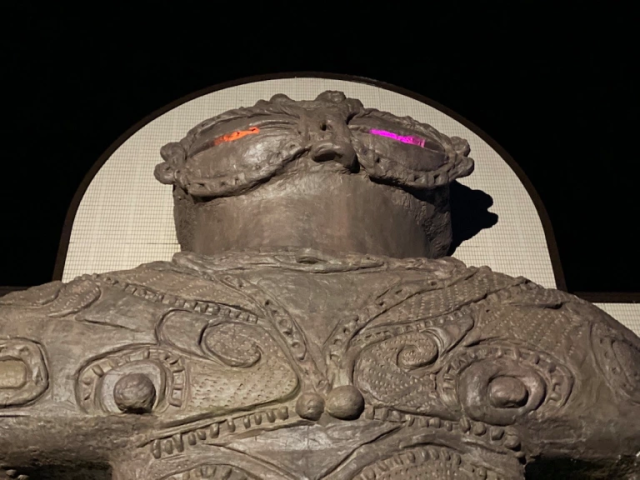
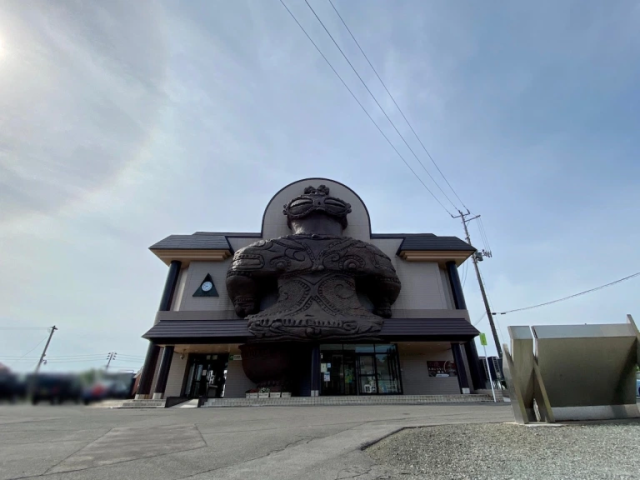
 Is there any point to holding your chopsticks the “correct” way? Let’s find out【Experiment】
Is there any point to holding your chopsticks the “correct” way? Let’s find out【Experiment】 How to make Ukrainian flag origami crane paper
How to make Ukrainian flag origami crane paper Resident Evil Umbrella green, red herb bath salts now exist in real world, are terrifying【Pics】
Resident Evil Umbrella green, red herb bath salts now exist in real world, are terrifying【Pics】 We got our paws on the real-kitty-litter snow globe, and here’s how it looks
We got our paws on the real-kitty-litter snow globe, and here’s how it looks In the search for the perfect crunchy cream puff, we try Beard Papa’s new cookie-topped choux
In the search for the perfect crunchy cream puff, we try Beard Papa’s new cookie-topped choux Foreigner’s request for help in Tokyo makes us sad for the state of society
Foreigner’s request for help in Tokyo makes us sad for the state of society Japanese city loses residents’ personal data, which was on paper being transported on a windy day
Japanese city loses residents’ personal data, which was on paper being transported on a windy day Historical figures get manga makeovers from artists of Spy x Family, My Hero Academia and more
Historical figures get manga makeovers from artists of Spy x Family, My Hero Academia and more Red light district sushi restaurant in Tokyo shows us just how wrong we were about it
Red light district sushi restaurant in Tokyo shows us just how wrong we were about it Harajuku Station’s beautiful old wooden building is set to return, with a new complex around it
Harajuku Station’s beautiful old wooden building is set to return, with a new complex around it Suntory x Super Mario collaboration creates a clever way to transform into Mario【Videos】
Suntory x Super Mario collaboration creates a clever way to transform into Mario【Videos】 Ghibli Park now selling “Grilled Frogs” from food cart in Valley of Witches
Ghibli Park now selling “Grilled Frogs” from food cart in Valley of Witches Studio Ghibli releases new action figures featuring Nausicaä of the Valley of the Wind characters
Studio Ghibli releases new action figures featuring Nausicaä of the Valley of the Wind characters Japan’s cooling body wipe sheets want to help you beat the heat, but which work and which don’t?
Japan’s cooling body wipe sheets want to help you beat the heat, but which work and which don’t? Toyota built a life-sized Miraidon Pokémon and are letting people test drive it this weekend
Toyota built a life-sized Miraidon Pokémon and are letting people test drive it this weekend McDonald’s new Happy Meals offer up cute and practical Sanrio lifestyle goods
McDonald’s new Happy Meals offer up cute and practical Sanrio lifestyle goods Japanese ramen restaurants under pressure from new yen banknotes
Japanese ramen restaurants under pressure from new yen banknotes French Fries Bread in Tokyo’s Shibuya becomes a hit on social media
French Fries Bread in Tokyo’s Shibuya becomes a hit on social media New private rooms on Tokaido Shinkansen change the way we travel from Tokyo to Kyoto
New private rooms on Tokaido Shinkansen change the way we travel from Tokyo to Kyoto Tokyo Tsukiji fish market site to be redeveloped with 50,000-seat stadium, hotel, shopping center
Tokyo Tsukiji fish market site to be redeveloped with 50,000-seat stadium, hotel, shopping center All-you-can-drink Starbucks and amazing views part of Tokyo’s new 170 meter-high sky lounge
All-you-can-drink Starbucks and amazing views part of Tokyo’s new 170 meter-high sky lounge Beautiful Ghibli sealing wax kits let you create accessories and elegant letter decorations【Pics】
Beautiful Ghibli sealing wax kits let you create accessories and elegant letter decorations【Pics】 Studio Ghibli releases Kiki’s Delivery Service chocolate cake pouches in Japan
Studio Ghibli releases Kiki’s Delivery Service chocolate cake pouches in Japan New definition of “Japanese whiskey” goes into effect to prevent fakes from fooling overseas buyers
New definition of “Japanese whiskey” goes into effect to prevent fakes from fooling overseas buyers Our Japanese reporter visits Costco in the U.S., finds super American and very Japanese things
Our Japanese reporter visits Costco in the U.S., finds super American and very Japanese things Studio Ghibli unveils Mother’s Day gift set that captures the love in My Neighbour Totoro
Studio Ghibli unveils Mother’s Day gift set that captures the love in My Neighbour Totoro More foreign tourists than ever before in history visited Japan last month
More foreign tourists than ever before in history visited Japan last month New Pokémon cakes let you eat your way through Pikachu and all the Eevee evolutions
New Pokémon cakes let you eat your way through Pikachu and all the Eevee evolutions Sales of Japan’s most convenient train ticket/shopping payment cards suspended indefinitely
Sales of Japan’s most convenient train ticket/shopping payment cards suspended indefinitely Sold-out Studio Ghibli desktop humidifiers are back so Totoro can help you through the dry season
Sold-out Studio Ghibli desktop humidifiers are back so Totoro can help you through the dry season Japanese government to make first change to romanization spelling rules since the 1950s
Japanese government to make first change to romanization spelling rules since the 1950s Ghibli founders Toshio Suzuki and Hayao Miyazaki contribute to Japanese whisky Totoro label design
Ghibli founders Toshio Suzuki and Hayao Miyazaki contribute to Japanese whisky Totoro label design Doraemon found buried at sea as scene from 1993 anime becomes real life【Photos】
Doraemon found buried at sea as scene from 1993 anime becomes real life【Photos】 Tokyo’s most famous Starbucks is closed
Tokyo’s most famous Starbucks is closed One Piece characters’ nationalities revealed, but fans have mixed opinions
One Piece characters’ nationalities revealed, but fans have mixed opinions We asked a Uniqlo employee what four things we should buy and their suggestions didn’t disappoint
We asked a Uniqlo employee what four things we should buy and their suggestions didn’t disappoint Princesses, fruits, and blacksmiths: Study reveals the 30 most unusual family names in Japan
Princesses, fruits, and blacksmiths: Study reveals the 30 most unusual family names in Japan Can even our brown thumbs keep this “moss bonsai” kit alive?【Photos】
Can even our brown thumbs keep this “moss bonsai” kit alive?【Photos】 We got our hands on the new and rare 1/12th scale model of a Japanese post box
We got our hands on the new and rare 1/12th scale model of a Japanese post box We tried making natto the old-fashioned way, and the result was unexpected but delicious 【SoraKitchen】
We tried making natto the old-fashioned way, and the result was unexpected but delicious 【SoraKitchen】 Taste-testing 3 fast food chains’ autumn chocolate pies in Japan to find the ultimate pie
Taste-testing 3 fast food chains’ autumn chocolate pies in Japan to find the ultimate pie The Mountain Has Moved capsule toys literally move mountains for your enjoyment
The Mountain Has Moved capsule toys literally move mountains for your enjoyment We tried cooking with a personal fryer and now we’re obsessed
We tried cooking with a personal fryer and now we’re obsessed Japan’s amazingly realistic CG schoolgirl learns how to kiss 【Video】
Japan’s amazingly realistic CG schoolgirl learns how to kiss 【Video】 Our matcha skeptic finds green tea dessert for people who don’t like green tea sweets【Taste test】
Our matcha skeptic finds green tea dessert for people who don’t like green tea sweets【Taste test】 How to cancel a floor on a Japanese elevator
How to cancel a floor on a Japanese elevator This USB device exists solely to warm up rice balls, and honestly, it does a great job
This USB device exists solely to warm up rice balls, and honestly, it does a great job Temple camping in Japan at Wakayama’s Daitaiji【Photos】
Temple camping in Japan at Wakayama’s Daitaiji【Photos】 Definitely not for kids — new Pennywise gacha capsule toy is terrifying yet awesome
Definitely not for kids — new Pennywise gacha capsule toy is terrifying yet awesome We spice up our fermented soybeans with curry powder flavored natto【Taste Test】
We spice up our fermented soybeans with curry powder flavored natto【Taste Test】 Shiraishi Island needs YOUR character ideas!
Shiraishi Island needs YOUR character ideas! ‘Butter mochi’ flavoured chocolate may be the best kind of Tirol we’ve ever tasted
‘Butter mochi’ flavoured chocolate may be the best kind of Tirol we’ve ever tasted The best-selling rice ball at Family Mart is…SPAM onigiri?
The best-selling rice ball at Family Mart is…SPAM onigiri?
Leave a Reply